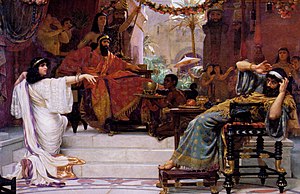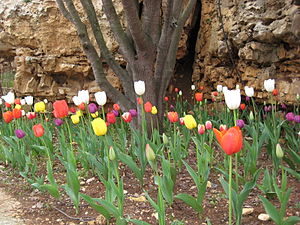
Never underestimate the spiritual possibilities of fun!
But let’s say you are in a communal situation where it seems that Purim is solely a children’s holiday, and you want “more.” Here are some possibilities:
1. READ THE MEGILLAH. If you don’t have access to a formal megillah reading, that’s OK. Break out the Book of Esther (it’s in your Bible) and read it, preferably out loud. Read it with other adults, or read it to yourself. The rabbis of the Talmud felt so strongly about the annual reading of the Book of Esther that they designated the proper time to do it (Erev Purim) and then several alternate times, should it be impossible that evening. Read all of it: not just the familiar early chapters, but the last two chapters, which are bloody and rather unnerving on the first reading.
2. OBSERVE THE MITZVOT. Purim has four commandments, and they are all suitable for adults. (1) Read the megillah. (2) Eat a festive meal. (3) Give food to the poor, either directly or through an agency. (4) Give small gifts of prepared food (mishloach manot) to friends.
3. CONTEMPLATE MASKS. Masks and disguises are a major theme of the holiday. Take time to think about the masks you wear every day, and what is hidden by those masks. Is there some part of yourself that you disguise? Why? What would happen if you dropped the mask? What is your disguise? What does it cost you to wear that disguise, day after day?
4. WORK FOR JUSTICE FOR WOMEN. While the original writer of Esther probably intended it primarily as a story about anti-Semitism, a 21st century reading of the book reveals a feminist message as well. The king mistreats and then banishes Vashti, but over the length of the story those acts bring chaos upon the kingdom of Persia. Rabbi Arthur Waskow points out in Season of Our Joy that when Haman speaks of the Jews in Chapter 3, “There is a certain people scattered abroad and dispersed among the peoples in all the provinces of thy kingdom; and their laws are diverse from those of every people,” his anti-Semitic words could just as easily have been describing the situation of women in the kingdom. Consider giving tzedakah to a women’s shelter, or take some action for justice for women.
5. WORK FOR SOCIAL JUSTICE. Megillat Esther is the story of a vulnerable minority who survive an attempt at genocide. Learn about and support organizations that watch out for hate in our society today, such as the Anti Defamation League or the Southern Poverty Law Center. Support or volunteer for organizations that work for social justice in your community.
6. GATHER WITH FRIENDS. Remember the “festive meal” listed among the mitzvot of Purim? Purim is a great opportunity for hospitality: invite some friends to join you in a nice dinner (maybe potluck?) and invite people to wear costumes or have a collection of costume pieces for them to make into costumes when they arrive. Have a silly party and play silly games. Purim is a holiday against pomposity – if you can find a way to be silly and have fun, then you will be in the spirit of the holiday.
7. UPSIDE-DOWN DAY. Vacation is down time, but Purim is upside-down time. The scroll tells a story about reversals. Make your festive meal silly by reversing things: dessert first, then the meal. Do things backward. (If there are children in your household, they can be very inventive with this.) Wear silly hats. Reverse roles! You may find out all sorts of interesting things about your family when you start switching things up – you may find new appreciation for someone.
Whatever you do for Purim this year, I wish you a day of laughter and insight!
Image: ![]()
![]() Some rights reserved by Cayusa
Some rights reserved by Cayusa






